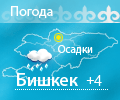Sights
Kok Djaik
From Jeti-ÖghüzKurort, an unpaved road (impassable with snow from November to March or later) climbs through a dainty pine-dappled valley, crossing and recrossing a gurgling stream on four log bridges. It emerges after around 4km onto a grassy mountainside with joyous Sound-of-Music views. Looking south, Alpine peaks form a splendid horizon across the deep, wide Kök-Jaiyk (Valley of Flowers) that falls away in front of you. If you're walking from (and back to) Jeti-Öghüz in one day, use the limited time to explore the first area of mountain-view pastures.
Waterfall in Arslanbob
If you're just here to relax, it's worth sampling the village's schizophrenic atmosphere at Arslanbob's signature waterfalls. Neither are especially memorable per se but the excitable local tourists buying candy-floss, yoghurt-balls and dodgey ice creams are fun to observe. And just walking there you'll get a better sense of the village's layout, impressive setting and part-timbered older mud-brick architecture. Just beyond the top of the smaller, more accessible Twin Waterfall , a footpath leaves behind the melee of souvenir stalls and crosses the stream.
Seven Bulls in Djety-Oguz
One of Kyrgyzstan's most photographed natural features, the Seven Bulls (Jeti-Öghüz) is an abrupt serrated ridge of ferric-red sandstone cliffs that have been vertically diced into a series of rounded bluffs. The formation isn't especially big, but it looks particularly striking in late spring when the rock's rosy colours contrast with the surrounding green fields and hills. The ridge rises directly north of the Soviet-era sanatorium, Jeti-ÖghüzKorort. For the best view, walk 10 minutes up a ridge-track doubling back behind the pair of shops where the access road's asphalt stops.
Animal market
Early on Sunday mornings one of Kyrgyzstan's biggest animal markets takes place around 2km north of central Karakol. Typical of such markets, you'll observe scenes at once sad and comical, with locals improbably bundling voluptuous fat-tailed sheep into the back seats of Lada cars. The setting amid semi-derelict flour mills might seem unprepossessing, but on clear days the backdrop of white-topped mountains is more striking from here than from the town centre. Marshrutka 102 drops you amid a melee of vehicles and hay-trucks on Udilova.
Suleiman-Too in Osh
This five-peaked rocky crag seems to loom above the city wherever you go. It has been a Muslim place of pilgrimage for centuries, supposedly because the Prophet Mohammed once prayed here. Its slopes are indented with many a cave and crevice each reputed to have different curative or spiritual properties (many detailed on photo-boards in the Cave Museum ). One such is fertility mini-cave Ene-Beshik , its rocks worn smooth by young ladies slithering in to aid their motherly aspirations.
Petroglyphs in Cholpon-Ata
Directly north of the former airport runway (now a wide road) is an extensive field of glacial boulders, many with pictures scratched or picked into their surfaces. Some of these petroglyphs date from the late Bronze Age (about 1500 BC), but most are Saka-Usun (8th century BC to 1st century AD), predating the arrival of the Kyrgyz in the area. The Saka priests used this sacred site for sacrifices and other rites to the sun god and they lived in the settlements that are currently underwater in the Cholpon-Ata bay.
